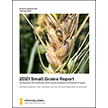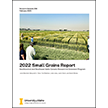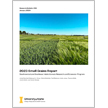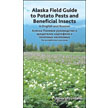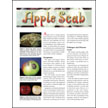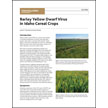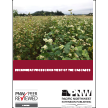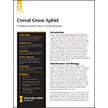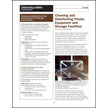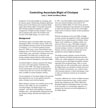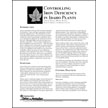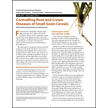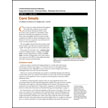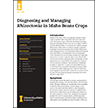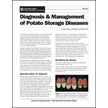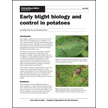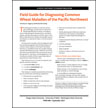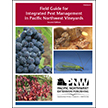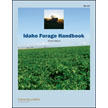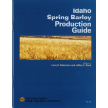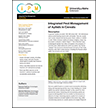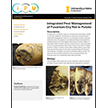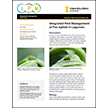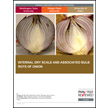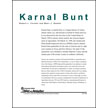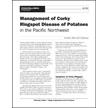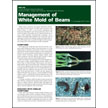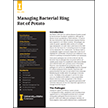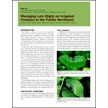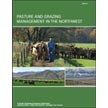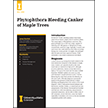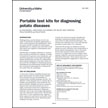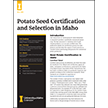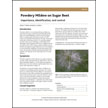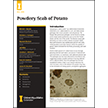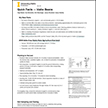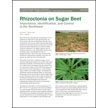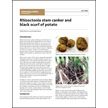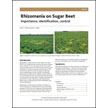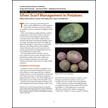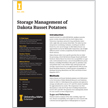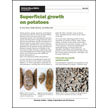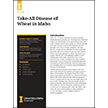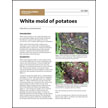Plant Diseases
2021 Small Grains Report: Southcentral and Southeast Idaho Cereals Research & Extension Program
Packed with tons of agronomic data, disease ratings and end-use quality data — interspersed with reports about planting and weather conditions, insect and diseases issues and more — this 160-page...
2022 Small Grains Report: Southcentral and Southeast Idaho Cereals Research & Extension Program
Packed with tons of agronomic data, disease ratings and end-use quality data — interspersed with reports about planting and weather conditions, insect and diseases issues, and more — this 162-page...
Packed with tons of agronomic data, disease ratings and end-use quality data — interspersed with reports about planting and weather conditions, insect and diseases issues and more. This 146-page...
Packed with tons of agronomic data, disease ratings and end-use quality data — interspersed with reports about planting and weather conditions, insect and diseases issues and more. This 162-page...
Agronomics of Leasing Fields for Potato Production
Leasing or renting fields for potato production may make it easier for growers to either start an agricultural career or expand one but be forewarned: gather as much background information as you...
Alaska Field Guide to Potato Pests and Beneficial Insects in English and Russian
This 128-page pocket-sized manual helps potato field workers scout for and identify economically important diseases, insects and weeds in potato crops in Alaska. Each pest or beneficial insect is...
Particularly troublesome where rainfall and relative humidity are high, and under overtree irrigation, apple scab can defoliate trees and blemish fruit to a point where it is unmarketable. Learn...
Barley Yellow Dwarf Virus in Idaho Cereal Crops
Describes the symptoms, method of spread and control measures for barley yellow dwarf, a viral disease spread by aphids. Color photos. Authors: Juliet M. Marshall, Arash Rashed 4 pages
Buckwheat Production West of the Cascades
Naturally gluten-free, buckwheat has a variety of culinary uses regionally and internationally. Learn about market opportunities, how to establish a strong stand, and the best management and...
Cereal Grass Aphid: A Newly Invasive Pest in North America
Cereal grass aphid is a newly invasive aphid pest in North America. It colonizes cultivated crops like wheat, barley and oat, sucking their juices and using them as host sites for reproduction,...
Cleaning and Disinfecting Potato Equipment and Storage Facilities
One important step in preventing the spread of potato diseases from field to field is the careful cleaning of equipment used in potato fields and by the effective cleaning of storage facilities...
Common Scab of Potato Caused by Streptomyces Species
Common scab of potato is a plant disease caused by several plant pathogenic bacteria in the genus Streptomyces. The unsightly cork-like lesions, which range from relatively superficial to deep...
Controlling Ascochyta Blight of Chickpea
This publication covers the background of the fungal blight and information on how to sustain profitable chickpea production. Topics covered include rotating crops, choosing crop varieties, using...
Controlling Iron Deficiency in Plants in Idaho
One of the most common problems for Idaho growers, landscapers and home gardeners is plant iron deficiency or chlorosis. Leaves turn yellow while the veins remain green. This publication describes...
Controlling Root and Crown Diseases of Small Grain Cereals
This publication describes practices to manage and minimize losses from root and crown diseases of wheat and barley throughout the Pacific Northwest. Authors: Richard Smiley, Timothy Paulitz, Juiet...
Two types of smut attack corn in the Pacific Northwest: common smut and head smut. This publication provides descriptions of symptoms and the disease cycle, and management strategies (which differ...
Diagnosing and Managing Rhizoctonia in Idaho Bean Crops
Rhizoctonia root rot is an important bean disease in southern Idaho crops that has caused from 30% to 100% yield loss, depending on the degree of severity. The culprit is a soilborne fungus,...
Diagnosis and Management of Potato Storage Diseases
Learn how to identify the major storage diseases of potatoes and how to manage them through prevention, storage disinfection and management of temperature, humidity and airflow during storage.
Early Blight Biology and Control in Potatoes
With a focus on Idaho conditions, this publication describes the symptoms and disease cycle of early blight in potatoes and recommends control measures including cultural control, resistant...
Field Guide for Diagnosing Common Wheat Maladies of the Pacific Northwest
This field guide provides an overview of basic plant pathology concepts that are relevant to disease identification in wheat. It introduces tools to help distinguish between biotic and abiotic...
Field Guide for Integrated Pest Management in Pacific Northwest Vineyards
To produce high-quality wine and juice grapes, effective pest management is essential. The second edition of Field Guide for Integrated Pest Management in Pacific Northwest Vineyards addresses this...
Help Protect the Famous Idaho Potato: Diagnose and Control Late Blight in Your Home Garden
Potato and tomato plants are susceptible to late blight, a disease caused by a fungal-like pathogen that caused the Irish Potato Famine of 1845–52. The disease is still with us today and continues...
Idaho Forage Handbook (third edition)
This comprehensive information source for anyone who grows forage in Idaho or neighboring states covers topics from species and variety selection to pest control to harvest management, hay storage...
Idaho Spring Barley Production Guide
Barley is one of Idaho’s most important crops. Although its harvested acreage has decreased in the past twenty years, the state is still the nation’s top barley producer. Published in 2003, this...
Integrated Pest Management of Aphids in Cereals
Insect and disease pests are prevalent in both residential and commercial food production settings, meaning that a large number of Idahoans contend with them each year. Part of an integrated pest...
Integrated Pest Management of Fusarium Dry Rot in Potato
Insect and disease pests are prevalent in both residential and commercial food production settings, meaning that a large number of Idahoans contend with them each year. Part of an integrated pest...
Integrated Pest Management of Pea Aphids in Legumes
Insect and disease pests are prevalent in both residential and commercial food production settings, meaning that a large number of Idahoans contend with them each year. Part of an integrated pest...
Internal Dry Scale and Associated Bulb Rots of Onion
Onion growers and packers in the Pacific Northwest have observed a problem on red, white and yellow cultivars: internal dry scale. Bulbs affected by internal dry scale have dead inner scales that...
Iris Yellow Spot Virus: A Threat to Seed- and Bulb-Onion Crops in Idaho
Iris Yellow Spot Virus is a powerful viral pathogen that drastically slows onion growth, leading to major crop loss and higher production costs. It first appeared in Idaho in 1989, but has since...
Karnal bunt or partial bunt is a fungal disease of wheat, durum wheat, rye and triticale. This publication includes information on the history, impact, symptoms, disease cycle and control of karnal...
Management of Corky Ringspot Disease of Potatoes in the Pacific Northwest
This six-page publication covers symptoms, causes and spread of corky ringspot disease; testing your soil for stubby-root nematodes, which carry the disease; options for controlling the disease;...
Management of White Mold of Beans
Describes the symptoms, disease cycle and management of white mold in beans, including prelanting considerations, cultural control and chemical control. Full-color photographs picture white mold as...
Managing Bacterial Ring Rot of Potato
Bacterial ring rot, caused by the bacterium Clavibacter sepedonicus, is one of the most destructive potato diseases in the world. Because losses due to stored, decaying potatoes can be substantial,...
Managing Late Blight on Irrigated Potatoes in the Pacific Northwest
Discusses symptoms of late blight and biology of the late blight organism. Integrated pest management strategies cover between-season management, current-season management, and harvest and storage...
This two-page fact sheet for use in the field offers recommendations for growing onions in Idaho, with pointers or information on growth stages and development, planting, fertilization, irrigation,...
Pasture and Grazing Management in the Northwest
$35 The comprehensive resource for anyone who manages livestock on pastures in the Northwest, this 214-page book offers pasture managers information and tools to enable their pastures and their...
Peach Leaf Curl — Diagnosis and Disease Management in Idaho
Peach leaf curl is a fungal disease that destroys leaves, can cause cracking or corks in fruit, and can kill young peach, nectarine and almond trees if left untreated. With numerous color...
Phytophthora Bleeding Canker of Maple Trees
Bleeding canker has recently been observed on mature maple trees in southern Idaho. The causal agent is Phytophthora cactorum, a plant pathogen capable of infecting over 200 tree species. Given its...
Pink Root Disease of Onion: Biology and Control
Pink root is one of the most significant diseases of onion in the Treasure Valley of Idaho and Oregon. Nearly one-quarter of susceptible onion losses are due to it. Learn what the symptoms are,...
Portable Test Kits for Diagnosing Potato Diseases
University of Idaho scientists evaluated commercially available portable test kits for diagnosing potato diseases, finding them generally accurate and easy to use. This publication discusses the...
Potato Mop-Top Virus: Biology and Disease Management
Potato mop-top causes dark, internal blemishes in potatoes. Because it is an emerging disease in the United States and no control measures yet exist, growers need to know the basic facts to...
Potato Seed Certification and Selection in Idaho
The selection of high-quality seed potatoes is essential to produce a profitable commercial potato crop. This publication explains the steps you need to take do to get your seed potato certified,...
Potato Virus Y Management for the Seed Potato Producer
One of the most serious challenges facing seed potato producers is managing Potato virus Y, which causes stunting, foliar damage, wilting and sometimes plant death, even though some potato species...
Powdery Mildew on Sugar Beet: Importance, Identification, and Control
Powdery mildew on sugar beets can be particularly severe in arid climates, causing sugar yield losses of up to 35%. This publication describes the pathogen, its symptoms, disease cycle and...
Powdery scab is a formidable and damaging fungus-like pathogen that damages potatoes worldwide. It causes gall formation on roots as well as lesions on the tubers, which reduce potato quality as...
This two-page fact sheet offers recommendations for growing dry beans in southern Idaho, with pointers on soil sampling and testing, fertilization, irrigation and insect, weed and disease control.
Rhizoctonia on Sugar Beet: Importance, Identification, and Control in the Northwest
In the 2000s, the incidence of root rot, which causes major sugar beet damage, increased in Idaho's Magic Valley. Learn about the different kinds that exist and which ones to look out for in the...
Rhizoctonia Stem Canker and Black Scurf of Potato
Various types of rhizoctonia stem canker and black scurf affect Idaho potatoes, often because farmers rotate sugar beet and tubers. Learn about their symptoms and disease cycle, as well as the best...
Rhizomania on Sugar Beet: Importance, Identification, Control
First detected in Idaho in 1992 near Rupert, rhizomania is the most serious disease that afflicts sugar beets worldwide. This five-page publication will help you to detect and deal with the...
Sharp Eyespot Disease of Wheat and Barley
Sharp eyespot disease is fungal and infects wheat and barley in temperate world regions but also in all parts of Idaho. Its global incidence has increased in the past few decades. Because it can...
Silver Scurf Management in Potatoes
Silver scurf, a fungal disease that causes blemishes that make potatoes appear “dirty,” has plagued North American potato production for the past thirty years. Its unsightly appearance discourages...
Spring Hulless Food Barley Production Quick Facts
This two-page fact sheet offers recommendations for growing spring hulless food barley in southern Idaho, with pointers or information on nutrition, rotation and seeding, growth stages and...
Storage Management of Dakota Russet Potatoes
Dakota Russet is a multipurpose and popular potato cultivar whose Pacific Northwest acreage has expanded in recent years. With increased yields comes larger storage volumes. Based on the results of...
Superficial Growth on Potatoes
In some circumstances, nonpathogenic fungi and bacteria grow on the surface of a potato. This publication describes its growth, explains the factors that promote it and provides some management...
Take-All Disease of Wheat in Idaho
Take-all is a highly destructive fungal disease of cereals whose ability to infect multiple plant parts often results in a crop’s complete destruction. Mainly found in wheat, barley, rye and...
Verticillium Wilt of Trees in Idaho
Verticillium wilt is a devastating soilborne disease to over three hundred plants worldwide, including trees, shrubs, fruits and vegetables. Given the fungi’s wide range, whose infection in trees...
Wheat streak mosaic virus Management in Idaho Cereals
Wheat streak mosaic virus (WSMV) is a serious disease that damages wheat production in Idaho. Transmitted by the wheat curl mite, WSMV infects winter and spring wheat and can also infect barley,...
With a focus on Idaho conditions, this publication describes the symptoms and disease cycle of white mold in potatoes and recommends cultural, biological (with Conithirium minitans ) and chemical...







